Peter Dutton blows apart the climate energy consensus
With his plan to drag Australia to the nuclear energy starting line, Peter Dutton has split the political atom and has built the foundations for a big-target election campaign based on strength and vision.
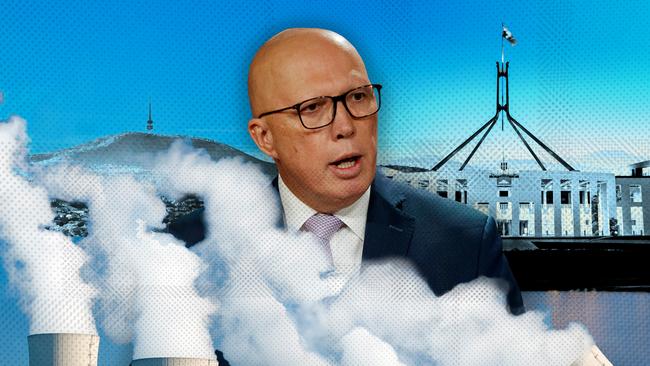
“We ask them: why are you coming to nuclear?” Massachusetts Institute of Technology energy studies professor Koroush Shirvan says.
“Based on the facts that are out there” is usually the answer. “Nuclear energy is the largest source of carbon-free energy in the US, and we need more of it to displace fossil fuels, so they are like, ‘I want to do this’,” Shirvan says.

At the University of NSW, which has a collaborative agreement with MIT, there is a similar shift. UNSW Nuclear Innovation Centre director Edward Obbard says young people, millennial and generation Z, care primarily about climate change and they see any technical solution to that as attractive – and that includes nuclear energy.
This is something that is reflected in the community more broadly. Opinion polls have consistently shown a trend towards support for nuclear across all demographics. If polls are to be believed, support for nuclear power is now the majority view. It’s a good thing because with the AUKUS defence agreement in place Australia will need to train up 500 nuclear engineers a year to build capability in an industry we have been reluctant so far to embrace. This is before we even consider building nuclear power reactors for energy.
Ironically, this makes Peter Dutton the great disrupter, tapped into the climate change zeitgeist with his plan to drag Australia to the starting line with up to seven government-owned nuclear reactors of all sizes, with at least one in almost every state, to fortify the nation’s electricity grid.
Predictably, the response to the Opposition Leader’s plan from the Albanese government, environment groups and large sectors of the established renewable energy industry has been meltdown.
Anthony Albanese said it was “nuclear fantasy” that would take a “radioactive sledgehammer to the Australian economy”. Jim Chalmers said the Dutton plan was “ideological stupidity” and the “dumbest policy ever put forward by a major political party”.
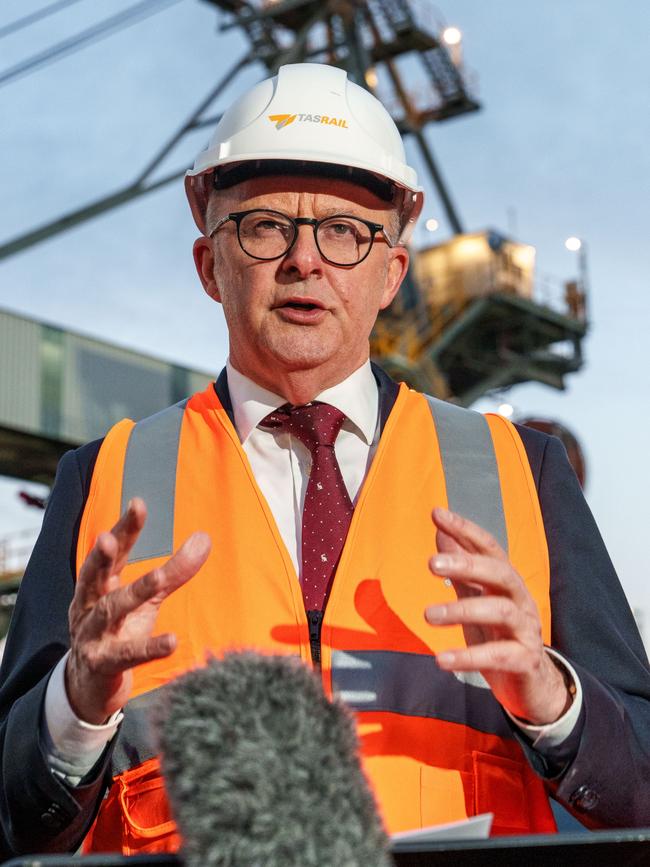
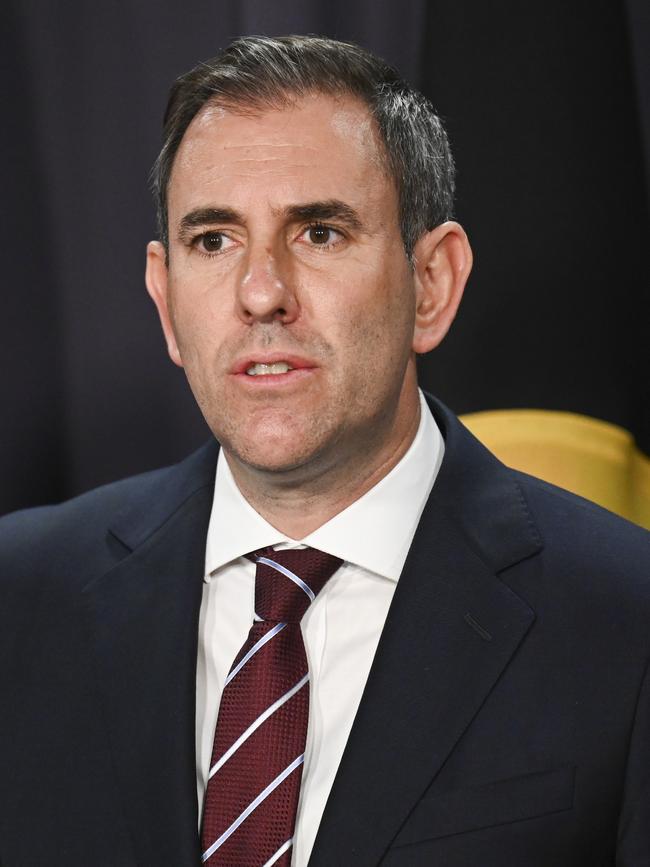
The Climate Council accused Dutton’s Coalition of engaging in a “radioactive greenwash” with the hyperbole that “Dutton’s scheme is: let the climate burn, let the mega-fires burn, let the sea levels rise, let the heat become unbearable”.
Griffith University school of environment and science emeritus professor Ian Lowe said, “Nuclear power is legally impossible, economically unachievable and environmentally irresponsible.”
Dutton has split the political atom and has built the foundations for a big-target election campaign based on strength and vision. “I would just say to Australians, forget about the fear and a weak and visionless Prime Minister out there trying to scare you,” Dutton said on Thursday.
“Look at the vision that we’re creating for our country which will generate industry jobs, economic growth for the next century.”
Mr Dutton told ABC radio that “people see through what is a pretty shallow attack so far, and a Prime Minister without a vision for our country, and too weak to make the decisions that will underpin our economic success for the next 80 to 100 years.”
Business groups have no choice but to keep their options open as a new stage of the climate wars reaches a critical mass. Regardless of where the Dutton policy goes, it has changed the investment outlook for the renewables industry and made the government’s already fraught challenge of meeting its legislated 43 per cent emissions reduction target more difficult to achieve. There is no doubt that the nuclear option will hang like a dark shadow over future investment decisions and make the rollout of renewables more difficult.
But here’s the thing. After pleading for certainty from government to ease the transition, big business simply has not delivered in a timely fashion. There is great scepticism from all quarters that enough will be done to meet the legislated emissions targets. And as time drags on the government – read taxpayers – is put further on the hook. Climate Change and Energy Minister Chris Bowen is now effectively proposing taxpayers accept the risk of big projects by guaranteeing a profit for producers no matter what.
But even that will not be enough because without the buildout of thousands of kilometres of new grid infrastructure it will not be possible to link the desired renewable production to the grid.
The Clean Energy Council has warned that for the first half of 2023 investment in energy generation projects fell to its lowest level since it began tracking project data in 2017. Construction of large-scale transmission infrastructure and back-up projects such as the Snowy 2.0 hydro-electric scheme are facing much higher costs and much slower progress than predicted.
The CEC says to enable a smooth transition, “networks need to install more than 10,000km of new transmission lines to ensure we can connect the renewable generation to our system”.
Major energy producers such as Origin and AGL have already said they do not see a big future for themselves in owning big wind and solar generation assets. They will build their future business around storage and services to stabilise the grid. Big plans for offshore wind, virtual grids and networked renewable energy zones are meeting community headwinds that should always have been expected.
In short, the government is desperate to get things moving but gridlocked by a lack of community buy-in in the areas where new infrastructure is needed most. This can mean only delays and more costs for taxpayers.
By going nuclear, Dutton is muddying the waters and throwing a lifeline to aggrieved communities that there is an alternative that will not require them to sacrifice their environment to allow city dwellers to believe they are saving the planet.
But even under the nuclear scenario this cannot be true. The plans for nuclear to be a bedrock of the future grid still depend on the development of large-scale renewables. This buildout can happen only if the grid augmentation goes ahead as well. This is particularly so given the time it will take to put any nuclear plan into action.
The opening shot in the latest incarnation of the climate war was the Coalition’s pledge to walk away from Labor’s legislated emissions reduction target of 43 per cent below 2005 levels by 2030. Dutton is opposed to announcing a 2035 target as required under the UN Paris Agreement framework. Despite the public outcry, there is no penalty or redress from the UN or anybody else if targets are missed or ambition not increased.
But having made such a big deal of rejoining the Paris Agreement frontrunners and bidding to hold a UN climate conference in Australia, the Prime Minister is trapped with a target he can’t meet and a determination to join the rest of the world in its false promise.
The half-yearly UN climate change meeting in Bonn, Germany, last week provides a snapshot of the state of play. According to Climate Home News, the talks in Bonn “ended in finger-pointing over their failure to move forward on a key program to reduce planet-heating emissions, with the UN climate chief warning of ‘a very steep mountain to climb to achieve ambitious outcomes’ at COP29 in Baku”, Azerbaijan’s capital.
In short, global greenhouse gas emissions are still rising. Pledges to reduce emissions are not being met. What has been pledged is not sufficient to have the impact deemed necessary. There is no agreement on how to put things back on track. Any emissions savings by countries such as Australia, responsible for only 1 per cent of global emissions, is being more than swallowed up by expansions in places such as China, Indonesia and India.
In the background is the realpolitik of the climate negotiations, which is how to prise trillions of dollars from the developed world into the coffers of the less developed. China, maintaining its position as part of the developing world, is refusing to pledge any financial assistance to a new fund as it builds up its green industrial capacity to the point it has become a major concern for leaders at the most recent G7 talks.
Leading economies are shutting the door to the import of Chinese electric vehicles, and if Donald Trump is re-elected to the White House in November expect a trade and sanctions war to shake the world.
Meanwhile, politics in Europe has taken a sharp turn to the right as action on climate change falls out of fashion, having helped to wreck the once powerhouse economy of Germany. Nuclear energy is back in fashion from the UN to Switzerland with Australia an oddity in the developed world for having not put it into the energy mix. Against this background the new Coalition policy to keep sight of the 2050 target, the primary Paris Agreement aim, makes some sense. But there remains the big challenge of cost and delivery.
Whether it is the Coalition’s nuclear plan or Labor’s faltering renewables-first agenda, there is a lot of work that needs to be done with gas. Origin chief executive Frank Calabria did the math at The Australian’s Energy Nation Forum on Wednesday. The assessment of Origin is that there will be times when backup sources of energy will have to run for 20 hours or several days. In South Australia there will be years with events for many days.
There is hope for new technologies, including better grid management and the development of affordable and scalable hydrogen, but both are a long way from being proven. The only existing option is gas, something serious players understand but niche climate authoritarians refuse to accept.
The Dutton plan is to focus more on gas pending the deployment of nuclear. Labor’s plan is to hope it will all work out in the end.
As scepticism grows about meeting the existing target the government would be well advised to digest how some of the most fervent supporters of the transition are crab-walking away from earlier positions. Even the Grattan Institute now says this was never going to be easy.
From a standing start the Dutton plan faces significant obstacles including uncertain cost, timing, technological maturity, social licence and the prospect of protracted green obstruction and potential lawfare. Premiers have been quick to say they will not participate in the plan. By making the next federal election a referendum on the issue, Dutton will know if he has a solid foundation on which to fight.
Supporters of nuclear see a parallel with the voice referendum. What were articles of faith for those on the left proved not to be shared by many in the mainstream. What looked obvious to so many was simply misguided. Opinion polls on nuclear suggest this may well be the case with energy, climate and cost of living as well.
Dutton’s plan is one easily embraced by engineers. University of Sydney electrical engineering senior lecturer Jeremy (Jing) Qiu says nuclear offers a reliable baseload energy option, complementing intermittent renewables and reducing reliance on fossil fuels.
He says by strategically locating these plants we can ensure a robust and resilient energy infrastructure, less vulnerable to supply disruptions. Additionally, integrating nuclear power into our energy mix enhances our ability to meet emissions targets while maintaining grid stability. “By embracing nuclear energy alongside renewables, Australia can forge a path towards a sustainable, secure, and independent energy future,” Qiu says.
The alternative vision is expressed by Swinburne University of Technology associate professor Mehdi Seyedmahmoudian, a renewable energy expert. He says “advancements in renewable energy sources such as solar, wind and hydro power, combined with energy storage technologies, offer more sustainable and efficient alternatives” to nuclear. “By investing in research, innovation and infrastructure for renewable energy and smart grid technologies, we can achieve a reliable, sustainable and cost-effective energy transition without relying on nuclear power, ensuring long-term energy security and environmental sustainability.”
The experts at MIT say it is not an either-or proposition. Shirvan says Australia could follow the United Arab Emirates model where in December 2009 UAE accepted a $US20bn bid from a South Korean consortium to build four commercial nuclear power reactors. Unit one of the country’s first nuclear power plant was connected to the grid in August 2020, followed by unit two in September 2021 and unit three in October 2022. Unit four achieved first criticality in February this year. Nuclear currently supplies about 7 per cent of UAE’s energy needs with natural gas supplying 86 per cent.
When the contracts were signed, support for construction of nuclear plants in the UAE had risen to 79 per cent, up 11 per cent from 2013. The UAE plants were new-generation large-scale plants, not small-scale modular reactors, and the construction agreement included leasing of nuclear material from the US to deal with issues of disposal and non-proliferation.
“Australia is better than UAE as a starting point,” Shirvan says. “They had no nuclear regulator and one nuclear engineer.”
Shirvan’s advice is not to build one reactor but to build four reactors as in UAE. “Even if you do one site that is 15 per cent of entire electricity in Australia,” he says. He says even a little bit of nuclear capacity would greatly reduce the amount of over-capacity that otherwise would need to be built in renewables and storage.
Equally important is the fact nuclear also can deal with the issue of heat for industry. Only about a quarter of emissions from across the economy comes from electricity, with three-quarters in transportation, buildings, industries, factories and agriculture. Lots of hard-to-abate industry sectors need heat, not electricity, and nuclear can do that where wind, solar and batteries cannot.
Neither is it necessary to replace all existing coal generation with nuclear to get a result.
“You don’t need to be 50 or 60 per cent nuclear,” Shirvan says.
“Even 15 per cent nuclear for reliable baseload does reduce the amount of renewable generation and storage, so in aggregate it is a good (financial) deal for the taxpayers.”
Dutton has taken a brave political gamble that voters will absorb the energy policy details. One point that favours him is that support for nuclear in the US is highest in places near existing nuclear facilities. “These are people who have been living near nuclear plants and they feel comfortable and either their family or neighbours are working at the sites and they see the economic benefit and well-paid jobs,” Shirvan says.
Politically, support for nuclear is one of the few areas that crosses the US political divide.
“In the US we have got two parties, the Democrats and Republicans, and they tend to disagree on every possible issue under the sun with few exceptions you can count on the fingers of one hand, and one of them is nuclear and they passed legislation together to support the existing fleet, development of new systems and export of technology,” Shirvan says.
Australia is coming late to the nuclear party but the view from abroad is a lot of the political outrage is confected. It’s just that both sides are coming at it from a different angle. The Liberals are saying nuclear energy is the future but Labor is sending out memes of three-headed fish while being 100 per cent behind AUKUS. Practically, it means the same thing. We are developing a skilled workforce and developing Australian expertise in nuclear technology.
As for nuclear power, there is a long way still to run but the options for stable, reliable power into the future are closing fast.



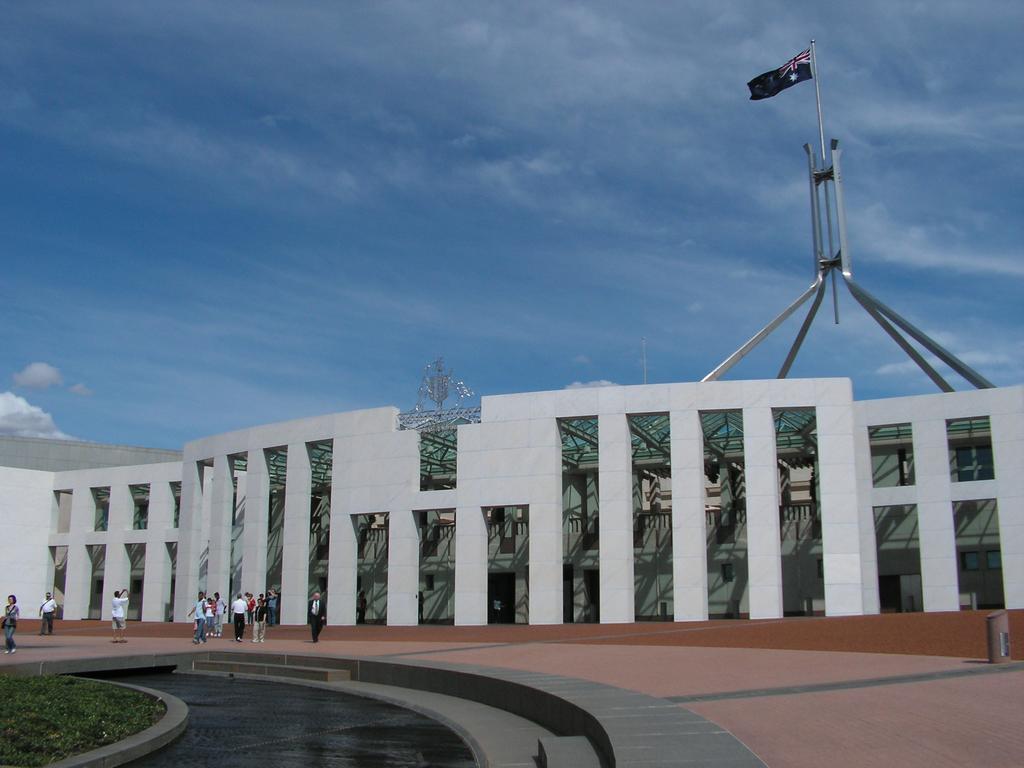
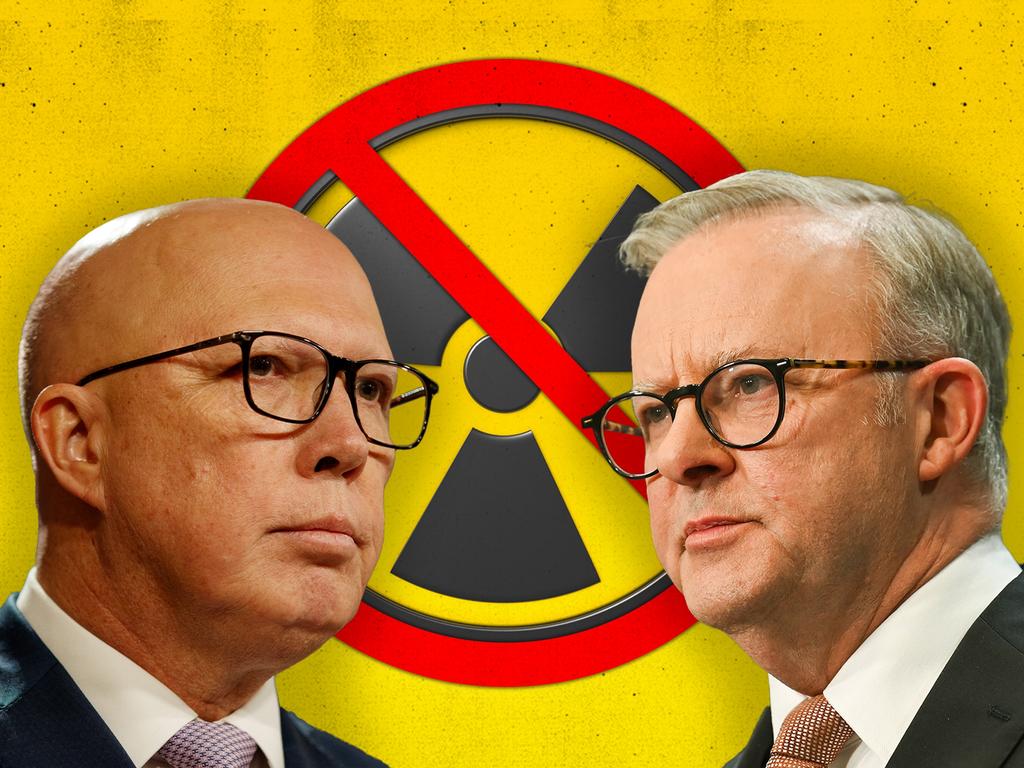
If there is a trend in the profile of energy students at the leading research university in the US it is Vegetarians for Nuclear.